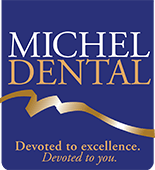
Invisalign - Topeka & Silver Lake, KS
A Metal-Free Way To Straighten Teeth
If you have crooked, crowded, or gapped teeth and would like to improve the way your smile looks and functions, you are certainly not alone. More adults than ever are choosing orthodontic treatment these days, but that doesn’t mean they’re covering up their smiles with metal brackets and wires.
Today, there’s a better alternative – the Michel Dental team is pleased to offer clear braces with Invisalign in Topeka and Silver Lake. The treatment gives adults and teens a clear alternative to traditional braces.
Why Choose Michel Dental for Invisalign?
- We are the #1 Ranked General Dentist in the Topeka Area for Invisalign
- Maintain A Confident Appearance With Clear Aligner Technology
- Custom Treatment Plans – Never “One Size Fits All”
What is Invisalign?
Invisalign is a revolutionary orthodontic treatment system that straightens teeth using clear, plastic aligners instead of brackets and wires. While you may choose to tell your friends and family that you are straightening with Invisalign, many people won’t even notice you are undergoing orthodontic treatment while you wear the discreet aligners. What’s even better is that the aligners are removable, so you can take them out to eat, brush, and floss with ease.
The Invisalign Process
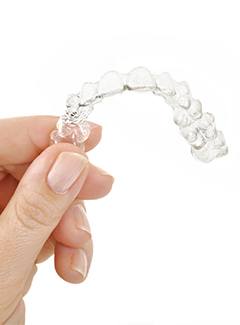
To set you up with your personalized Invisalign treatment, our dentists will first take digital scans to create a three dimensional model of your smile. This model is then sent to the Invisalign lab, where your trays are created according to the specific dimensions of your dentition.
After your personalized series of aligners is complete and has been sent back to us, you will make a quick visit to our Topeka or Silver Lake dental practice to check the fit. After that, simply wear your aligners as directed -- and watch as your teeth transform!
Some specific guidelines to follow during the Invisalign treatment include:
- Wear the trays for 20 to 22 hours each day.
- Remove the trays to eat, drink, brush, and floss.
- Do not expose the trays to hot temperatures, which could cause them to warp.
- Clean the aligners using the Invisalign cleaning system.
- Maintain excellent dental hygiene habits to prevent cavities and gum disease.
- Get in touch with your dentist right away if you lose, break, or have any type of problem with an aligner.
Invisalign Teen

Invisalign Teen is a modern and convenient alternative to traditional braces, specifically designed for teenagers. With the clear, removable aligners, your teen can straighten their teeth discreetly and comfortably without the hassle of metal brackets and wires. Whether they’re heading to school, sports practice, or social events, Invisalign Teen can help them achieve a winning smile without disrupting their daily routine! Read more below to see how this specialized Invisalign treatment from Michel Dental of Topeka can give your teen a gorgeous grin.
How is Invisalign Teen Different?

Invisalign Teen includes a special feature designed just for younger patients – blue compliance dots. These dots gradually fade over time, allowing them (and you) to track whether the aligners are being worn long enough. This simple distinction makes it easier for your teen to stay on track with their treatment and wear their aligners for the full 20-22 hours every day.
Is Invisalign Right for Your Teen?
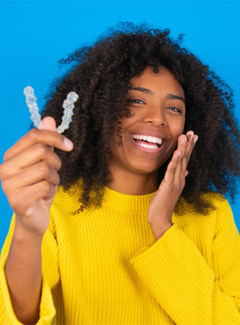
If your teen wants a nice, straight smile but is hesitant about traditional braces, Invisalign Teen could be the perfect solution. The clear, removable aligners allow them to eat whatever they want, play sports, and avoid the “metal mouth” while socializing. With the flexibility of Invisalign Teen, your child can concentrate on what matters to them instead of focusing on their teeth.
That said, the next best step is to schedule an appointment with us. Dr. Michel or Dr. Weber will examine your child’s mouth, discuss goals, and see if Invisalign Teen can give them the orthodontic care they need.
The Benefits of Invisalign Teen

Invisalign Teen offers several advantages tailored to teenagers and their busy schedules:
- Removability: If your child is active in sports or other extracurriculars where braces would be inconvenient, Invisalign Teen can be taken out. This allows them to wear mouthguards or play instruments with ease.
- Clear Appearance: The clear aligners ensure your teen never feels the need to hide their smile in social situations or during big events like school dances or picture days.
- Better Oral Hygiene: Since there are no brackets or wires to brush around, your child will be able to manage their oral care more easily.
- Shorter Check-ups: Less time spent in our office means more time to study and socialize!
Benefits of Invisalign
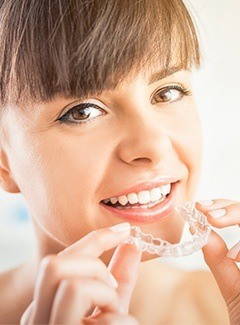
To date, Invisalign has helped more than 12 million people around the world achieve their dream smiles. If you’re still in the process of deciding which orthodontic treatment is right for you, then it may be helpful to learn all of the reasons patients love clear aligners. With this in mind, keep reading for six noteworthy reasons to consider Invisalign!
Improved Comfort

One of the biggest draws of Invisalign is that there aren’t any metal brackets and wires. However, that’s not the only reason this discreet orthodontic treatment is pain-free. Each of the aligners are custom-made to fit the unique contours of your mouth, dramatically reducing your chances of experiencing soft tissue irritation. If any of your trays have a sharp edge, you can always use dental wax too!
See-Through Trays

Arguably the biggest benefit of Invisalign is that the aligners are see-through, making them virtually undetectable when worn. In fact, it will be hard for even those closest to you to tell when you are and aren’t wearing them! Just make sure to commit to good habits, like cleaning your aligners after each meal, to ensure they stay clean and clear.
Hassle-Free Oral Hygiene
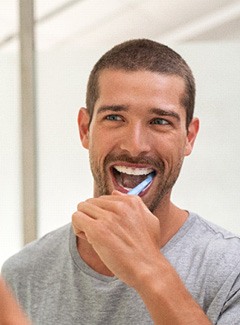
Patients with traditional braces often need to buy special oral hygiene products, like interproximal toothbrushes and pre-threaded floss. The same cannot be said for those with Invisalign! That’s because you don’t need to maneuver around brackets and wires – just take the aligners out and complete your oral hygiene regimen as you usually would.
Quick Follow-Up Visits

Not only are there fewer follow-up visits with Invisalign, but they are significantly shorter as well. In fact, the vast majority will only take 15 minutes or so! This is especially helpful for career-driven professionals, teens with demanding schedules, and busy parents who have jam-packed calendars and can’t spend 45+ minutes at our office every month.
Improved Confidence

Many patients with crooked and spaced-out teeth want a straight smile, but very few want to wear metal brackets and wires to achieve this goal. Fortunately, Invisalign is just as effective as traditional braces but considerably more discreet. That means that you won’t have to hide your smile during your teeth-straightening journey – you can proudly display it every step of the way!
Non-Invasive Treatment
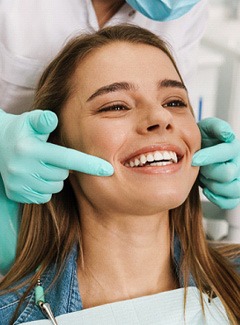
Sometimes, tooth extractions were necessary with traditional braces. Invisalign takes a less invasive approach with alternatives like IPR, which involves removing a sliver of your enamel to make room for the movement of your teeth. There are several other advancements in the dental field that make the entire treatment experience more comfortable as well, including digital impressions instead of putty ones.
Living with Invisalign Aligners

We find that many of our patients are interested in learning about life with braces leading up to the arrival of their first aligners. If you’re in the same boat, then you’ll be happy to know that this next section is dedicated to just that! Below, you’ll find information on everything from how to clean your aligners to what you need to remember about wearing your trays.
Wearing Your Trays
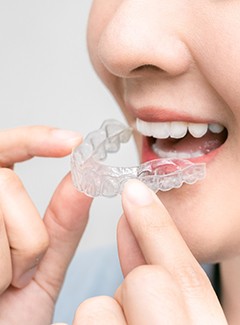
There’s one important rule all patients need to follow: wear your aligners for 20-22 hours a day. This is important because your trays only work while you’re wearing them. If you consistently fall short of this goal, then there’s a good chance that your teeth won’t track properly. That’s why we recommend only taking them out to eat or complete your oral hygiene regimen.
Cleaning Your Aligners
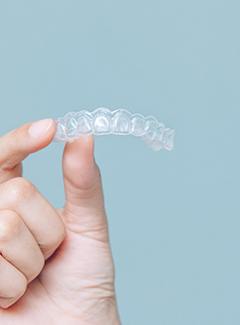
Although your aligners will be clear when you first take them out of the packaging, they won’t stay that way if you adopt bad habits, like keeping them on while drinking coffee or not cleaning them throughout the day. The good news is that preventing stubborn stains from surfacing is relatively easy: use clean, lukewarm water and a soft-bristled toothbrush to clean them after breakfast, lunch, and dinner.
Eating & Drinking

Since there aren’t any dietary restrictions with Invisalign, the “rules” boil down to this: remove your aligners any time you eat or drink anything other than water. It’s also important that we mention here that you should do your best not to over-indulge in starchy and sugary foods since they increase your risk of tooth decay. If you develop a cavity, then your treatment will be paused until you receive the necessary restorative care.
Losing or Damaging a Tray

Although losing or damaging a tray requires immediate attention, do your best not to panic. Situations like these happen all the time, so our Topeka dental team can help you find a solution relatively easily. With that said, we encourage patients who can’t find their aligners to retrace their steps, starting from the place they last remember seeing them. If they truly are lost, then do the same thing you would if they broke: give us a call.
Routine Check-Ins

Your routine check-in appointments will be every six or eight weeks, and each one serves an important purpose. First, they allow us to take new scans of your teeth and monitor how your teeth are tracking. Second, they give you an opportunity to periodically ask questions about your treatment. Third, we use these appointments to provide you with your next batch of aligners. That way, you don’t have to keep track of all of them at once.
Understanding the Cost of Invisalign
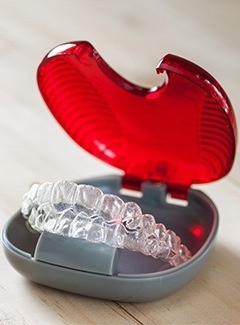
While Invisalign in Topeka and Silver Lake is very comparable to the cost of traditional orthodontic treatment, the price does vary with each unique case depending on the length and complexity of your treatment. Some dental insurance plans provide an orthodontic benefit, which may or may not include Invisalign. Our team at Michel Dental is passionate about revealing straight, beautiful smiles with Invisalign. We have significant experience with Invisalign and can also provide a number of other cosmetic and restorative treatments to help you enjoy your very best, most beautiful smile. Don’t be afraid to contact us today and let us help you get started.
Factors that Affect the Cost of Invisalign
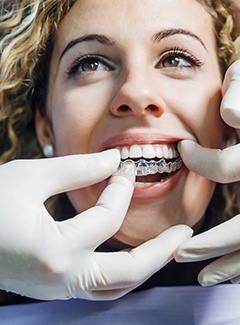
It isn’t until you call to schedule a consultation with Dr. Michel that we will be able to provide a reliable cost estimate for your Invisalign treatment. It’s important to remember that no two patients are alike, so your situation will likely be very different from someone else. During your visit, we will examine your oral cavity to determine the problem. We will then consider various factors that will be incorporated into the overall cost for care, some of which include:
- The duration of treatment – Yes, Invisalign aligners are known for their ability to produce faster results but depending on what you need to have done to your teeth, it may take longer, especially if additional appliances or procedures are needed to ensure optimal results (i.e., tooth extraction, etc.).
- The severity of your case – Do you only have one or two small gaps between your teeth that need to be closed? Are you living with a severe overbite or crossbite? No matter the situation, you can expect the timeline and cost for treatment to vary. Naturally, it is much less expensive to close the gap between two upper front teeth than it is to completely realign a person’s overbite.
- The numbers of aligners you will need – When looking at your smile, we will determine if you need clear aligners for your top teeth, bottom teeth, or both, as how many aligners you will need will greatly determine the cost.
Invisalign vs. Smile Direct Club™: Which Costs More?
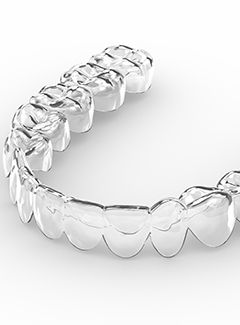
When it comes to cost, it’s not surprising that Smile Direct Club costs much less than seeing a qualified professional for Invisalign (i.e., $2,000 as opposed to between $3,000 to $8,000). You may be thinking it’s best to just do it yourself and trust a company that promises outstanding results. Unfortunately, you could do more harm than good to your smile if you’re not careful. Here’s how:
- You’re not evaluated by a qualified professional throughout treatment.
- You’re responsible for generating your own tooth impressions, which can be less accurate or precise and result in ill-fitting aligners.
- You won’t have a professional to turn to if you are dealing with a problem.
- You’re left to manage your treatment and ensure everything is moving along smoothly.
Instead of relying on what you believe to be “good progress,” it’s best to invest in Invisalign simply because you can trust the process when seeing a qualified professional to administer care.
Does Dental Insurance Cover Invisalign?
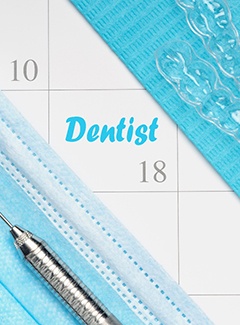
Depending on your dental insurance company, they may or may not offer orthodontic coverage. If they do, it may only cover traditional orthodontics, not Invisalign. But this isn’t always the case, which is why it’s best to reach out to a representative at your dental insurance company to make sure. If they do agree to pay a portion of the cost, they may agree to cover up to 50%, which is extremely helpful, but you’ll need to have an alternative way to pay for any out-of-pocket expenses you might incur along the way.
But before you start looking at your available credit card balances, consider how you may be able to use your FSA (if you have one) to pay a portion of your orthodontic treatment.
Options for Making Invisalign Affordable
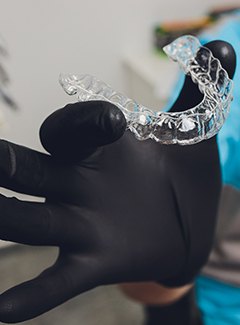
Uninsured? Worried you won’t be able to pay for your Invisalign aligners? Before you give up and cancel your scheduled consultation, consider how our Smile Savings Plan or flexible financing can help! With our Smile Savings Plan, you can pay one low annual fee for access to basic dental care as well as discounts on other available treatments.
If you’d prefer to break up your treatment into more manageable payments, you can always see if your eligible to enroll in a low or no interest payment plan through CareCredit. Offering flexible financing, you can easily stay within your budget while working to straighten teeth in Topeka and Silver Lake.
The team at Michel Dental is ready to help you take the next step. From offering guidance and insight to better understand the cost of your treatment to maximizing your benefits and assisting you in the process of enrolling in flexible financing, we’re here to ensure your smile gets the treatment it deserves at a cost that is affordable.
Who Can Invisalign Help?

Invisalign is a great option for many patients who suffer from mild to moderate dental misalignment, including issues like crooked teeth and malocclusions (bad bites). During your consultation, our team will examine your mouth, learn a bit about your lifestyle choices, and make a recommendation on whether Invisalign is a good fit for you. Here are some specific examples of issues that Invisalign is often able to address:
Crowded Teeth
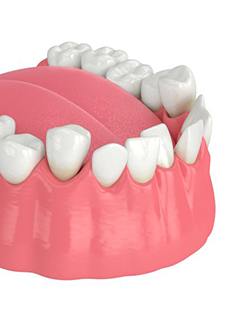
Crowded, overlapping teeth are a threat to your oral health because they can interfere with your bite and cause jaw pain. They can also be challenging to clean, thereby increasing your risk of cavities and gum disease. Invisalign, possibly after one or more extractions, can shift the teeth so each one has the space it needs to function optimally.
Gaps Between Teeth
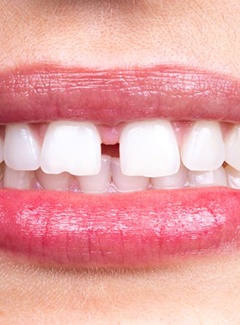
Large spaces between the teeth may be the result of natural bone development, bad habits during childhood, and other factors. Regardless of what caused your gapped teeth, your condition may leave your gums vulnerable to harm. You might also feel self-conscious about your appearance. Invisalign may be able to move your teeth closer together.
Overbite
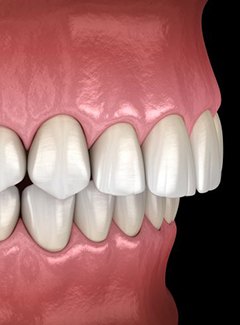
An overbite occurs when the top teeth jut out too far in front of the bottom teeth. This issue can contribute to speech problems, TMJ disorder, undesirable facial aesthetics, and a higher risk of dental damage. Invisalign, usually with the help of appropriate accessories, may play a role in correcting an overbite.
Underbite
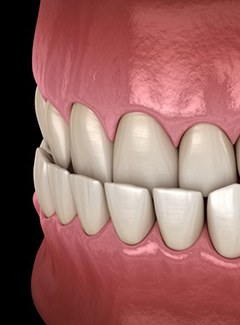
When the bottom teeth protrude in front of the top teeth, it is known as an underbite. This issue is usually the result of genetics or oral trauma. It can increase the risk of sleep apnea, mouth breathing, and chewing difficulties. Usually, Invisalign, with the help of rubber bands, can help to train the lower jaw to rest in its proper position.
Crossbite
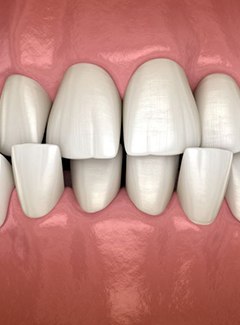
When some of the bottom teeth are in front of the top teeth, it is called a crossbite. Since the teeth contact one another at odd angles, they are at a greater risk of tooth damage, gum disease, speech issues, and other complications. Often, Invisalign aligners and select accessories can help to correct a crossbite.
Open Bite
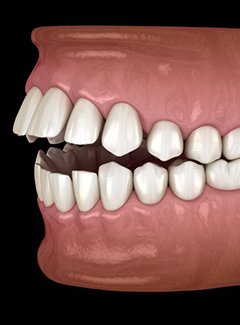
When your back teeth are touching one another, is there a gap between your top and bottom front teeth? This issue is called an open bite. It often occurs due to poor bone development or bad habits during childhood, such as prolonged thumb-sucking. In many cases, Invisalign aligners are able to close an open bite and produce improved oral function.
Invisalign FAQs
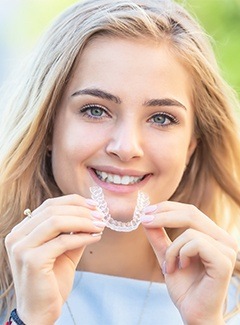
What materials are used to make the aligners?
Invisalign is an FDA-approved treatment that uses a series of clear BPA-free plastic aligners. The thermoplastic material looks like the trays used for whitening treatments; however, they are custom-made to gradually move your teeth.
How are my teeth moved?
Digital impressions of your mouth are used to map your treatment plan using a series of aligners. Each one gradually moves your teeth. You wear each for about one week before switching to the next. The number of aligners needed varies depending on your specific treatment plan. On average, it takes about 1 year to finish the series.
How often do I need an appointment?
Invisalign in Silver Lake is the perfect option if you have a busy schedule. Since no wires are used, you do not need appointments for adjustments, so you spend less time in the dental chair. You will be required to have a checkup about every 10 to 12 weeks to monitor the movement of your teeth.
How often can I take the aligners out?
Since the aligners are not fixed to your teeth, it resolves many of the disadvantages of traditional braces, like dietary restrictions Although this offers convenience, you must also commit to wearing them for at least 22 hours per day, which means you will need to wear them while you are sleeping. You should only remove them when eating or drinking, brushing or flossing your teeth, or when cleaning your aligners.
Will the aligners affect my speech?
As with any orthodontic treatment, there is a bit of a learning curve when speaking. You can expect to have a lisp for 1 or 2 days while you get used to your aligners, but it subsides quickly. The aligners offer a secure and comfortable fit, so you will not need to worry about them slipping while speaking.
Can I chew gum while wearing the aligners?
It is best to avoid gum and any other foods while wearing the aligners. Gum sticks to them while foods can cause them to break or discolor.
Will I need a retainer?
You will need a retainer after you have finished your series of aligners to prevent your teeth from moving back into their previous positions.
Is There Anything I Can’t Eat with Invisalign?
Although there aren’t any dietary restrictions with Invisalign, there are a few things we recommend avoiding. For example, if you have a lot of attachments, it may be beneficial to refrain from eating raw nuts, peanut brittle, and other crunchy foods. On a similar note, we recommend keeping your consumption of foods and drinks with added sugar to a minimum. Remember, even a small cavity has the potential to put your treatment timeline on hold, and we want to avoid that to give you the results you desire as quickly as possible!
What Should I Do If I Break an Invisalign Aligner?
If your aligner breaks, it’s important that you call us ASAP. To prevent significant delays to your treatment plan, we need to determine if the best course of action is having you wear your previous trays until a replacement arrives or having you move onto the next aligners in the series.
Note: to help prevent your aligners from breaking in the future, it can be helpful to store them in their designated case whenever you aren’t wearing them. We also recommend cleaning them over a sink filled with water. That way, the water breaks their fall instead of the porcelain or stone at the bottom of your sink.
Can I Drink Coffee with Invisalign?
There is one rule when it comes to coffee: you can’t drink it (or any other dark-colored beverages) with your aligners in. As your dental team, we also recommend keeping additives like cream and sugar to a minimum as well as always using a straw to protect your teeth from staining.
Does Invisalign Hurt?
In the hours following your transition to a new set of trays, it’s very normal to experience some soreness. That’s because your aligners are working to move your teeth into their properly aligned positions! The good news is that something as simple as sipping on cool water can help alleviate your discomfort. Many patients often find that sticking to soft foods, making the switch before bed, and taking an OTC pain reliever helps as well.
Why Do I Need to Wear My Aligners for 20-22 Hours a Day?
The short answer is that your aligners only work while you’re wearing them. To ensure your teeth are in the position they need to be for your next aligners, you need to wear your current ones for 20-22 hours a day. If you consistently don’t meet this goal, then there’s a chance that you will fall off-track with your treatment plan, requiring more aligners to be made. As you can imagine, this can result in a larger investment of your time and money, which is why it’s important to make meeting the wear time a priority.
How Do I Clean My Invisalign Trays?
All you need is a soft-bristled toothbrush and lukewarm water! If you want to give your aligners a deeper clean because they are starting to smell or look yellow, then you can also dissolve a packet of Invisalign Cleaning Crystals in a container of water and allow them to soak for 15 minutes or so.
Still Have Questions?
Michel Dental wants you to feel confident in your decision to align your teeth. If you still have questions about Invisalign, we are more than happy to answer them. Contact our office today to learn more about the treatment or to schedule your consultation.
I Need a Checkup & Cleaning I Have a Cavity or Broken Tooth I am Missing One or More Teeth I Have a Dental Emergency I want to Improve My Smile I am Worried About Gum Disease I am Anxious or Scared of the Dentist I am Concerned About Sleep Apnea I Have Pain When I Open/Close My Mouth View Our Services